There’s a new principle behind organising the GP day. It’s a shift from thinking about supply (slots) to thinking about demand. The question is:
“How are we going to help all our patients, all day, every day?”
This may sound impossible but by understanding the predictable patterns of demand, it becomes possible, even natural.
Demand
- Start the GPs responding at the same time that reception opens.
Initially you can expect patients to call as they have been used to, all at the start of the day. askmyGPs will be closely allied to this as patients are guided there by your phone message. The good news is that it’s much faster for you to respond online, and it’s worth making this a priority to encourage the shift online.
When patients have a response within minutes, they immediately gain confidence in the system. As patients become used to the idea that you provide the same service all through the working day, the demand naturally spreads out. The sooner you get on top of demand, the sooner it spreads – sometimes within the first week or two. Nonetheless, for most practices the first hour will remain by far the busiest.
- Ensure you have the right balance of sessions by day of the week.
We know the variation of demand by weekday, for example 28% of the week is on Monday while only 16% on Thursday, and this is built into our Loadmaster planner. Expect the day after a Bank Holiday to be at least as busy as a Monday. Using Navigator to predict the daily demand load means you can adjust daily GP daily sessions with confidence. First priority is to fill the mornings, when at least 2/3 of demand can be expected. Put prebookable clinical sessions into midweek afternoons, eg antenatal, baby checks, minor surgery.
- How many calls per GP per day? There is no precise figure but it’s up to you: the number of patient demands per day is easily predictable, so plan the GP sessions for what you want to do. We recommend starting with 50/day. This might be 30 in the morning and 10 in the afternoon, but may spread to 25 morning and 15 afternoon. See what happens in Loadmaster when you adjust the variables.
Online, telephone and face to face time
- To stay on top of demand we recommend calling GPs start with online and telephone consultations up to about 10.30.
- If you have parallel sessions of GPs only seeing patients, they should start at least half an hour after the calling GPs.
For the rest of the morning, try a balance of around half remote and half face to face. You may adjust this up or down as a pattern emerges. For the afternoon session, start with some telephone calls, but expect to spend about 2/3 of clinical time face to face. At quieter times, you may have only some of your GPs working a phone list, possibly shared, as it is not necessary for all GPs to take new demand. You can decide on exceptions to balance the other aim for high continuity.
Sustainability
- Build breaks into the working day.
You need to look after yourselves as well as the patients. A large part of this comes from a sense of control over your day, which many GPs report, at least most of the time. Mid morning coffee, typically at the end of the all phone session, is worthwhile. Many practices take a break from calling patients for 1.5 or 2 hours at midday. This seems to help balance clinical workload with lunch break, meetings and other duties, and patients will understand this if you set expectations. You then need only a duty doctor to cover for emergency calls. Towards the end of the day call volumes tail off, and the nature of problems also changes such that fewer patients need to be brought in.
The key points are: prediction, rapid response, continuity, balance and sustainability. Be prepared to refine the pattern in the early weeks, and as you continually improve your service.




